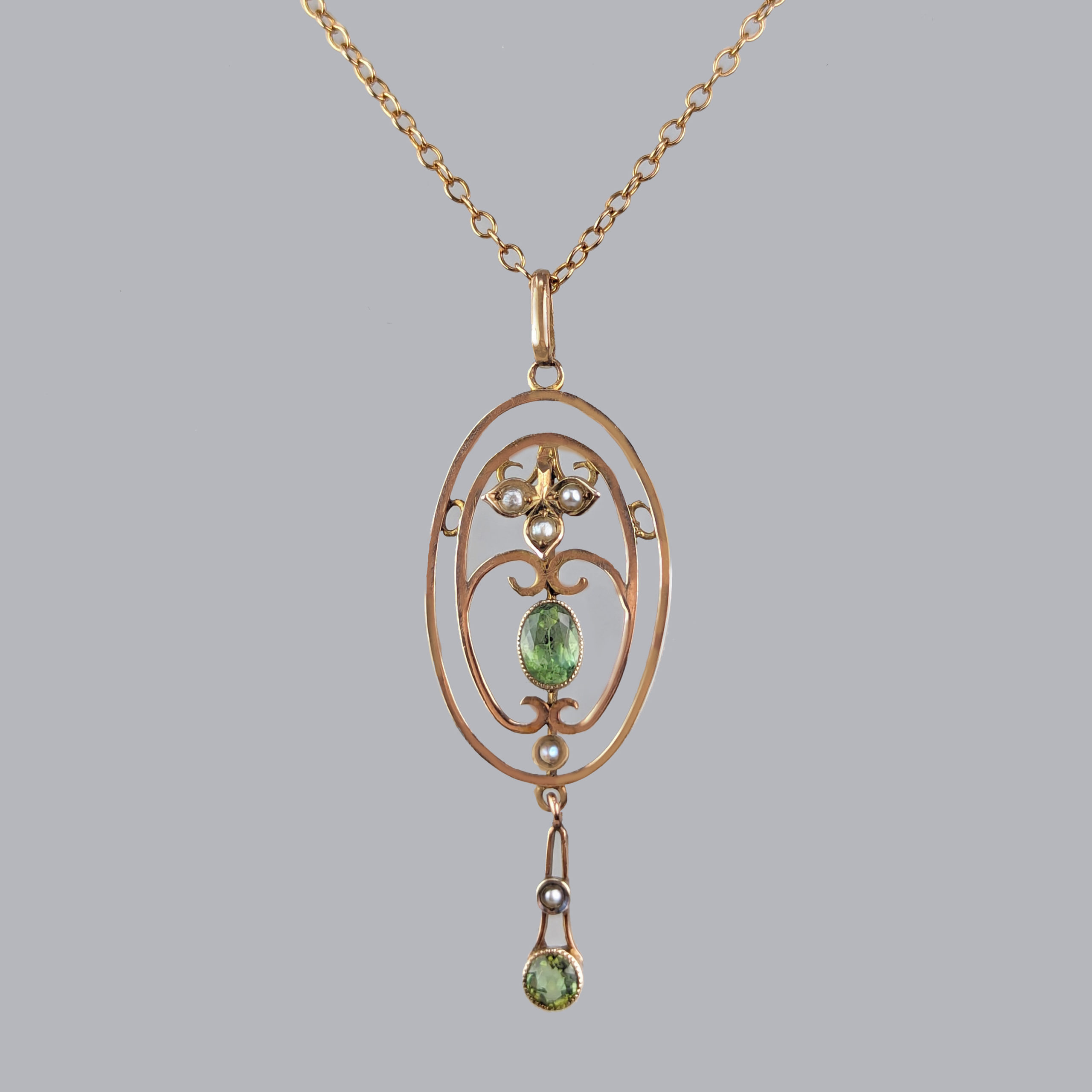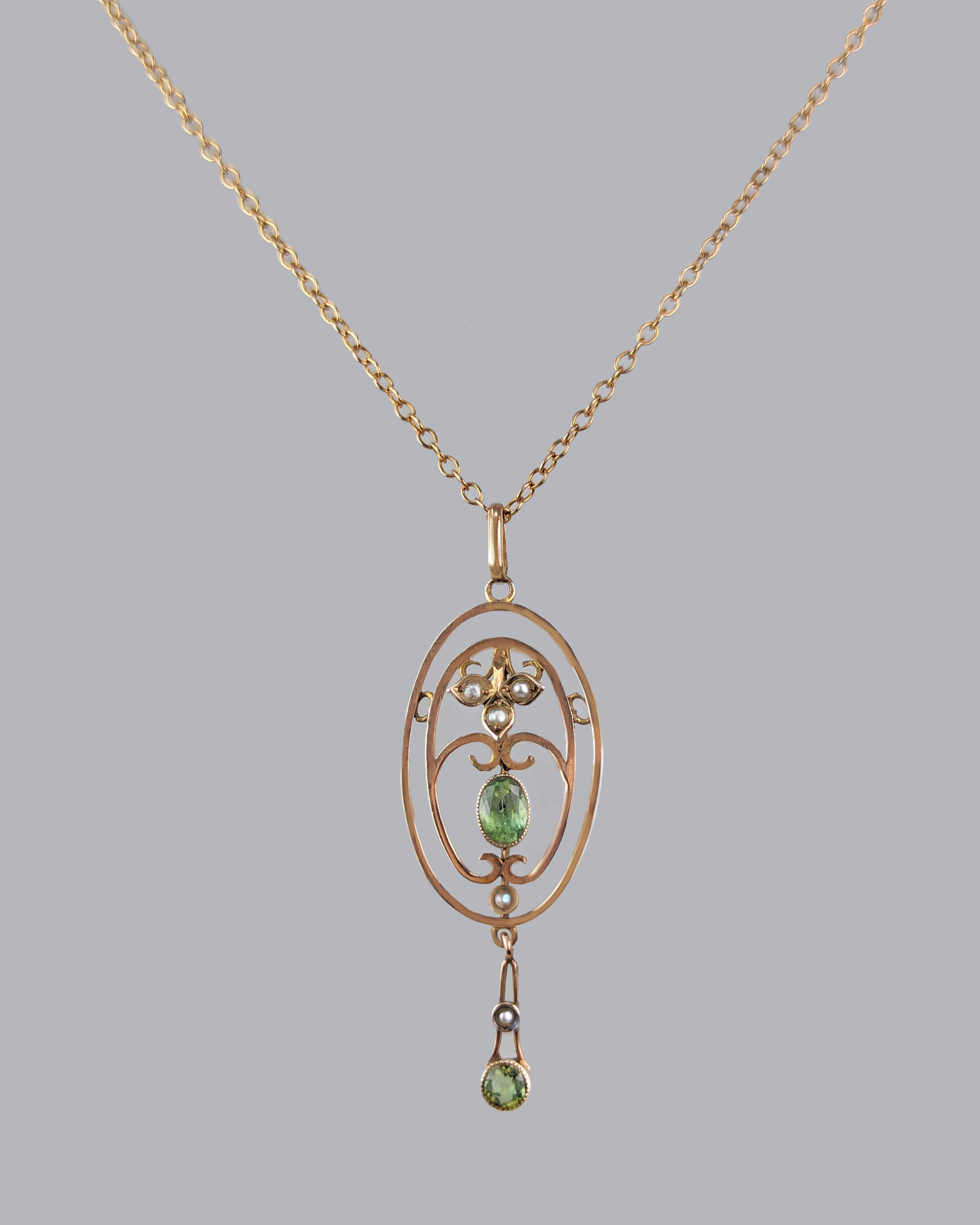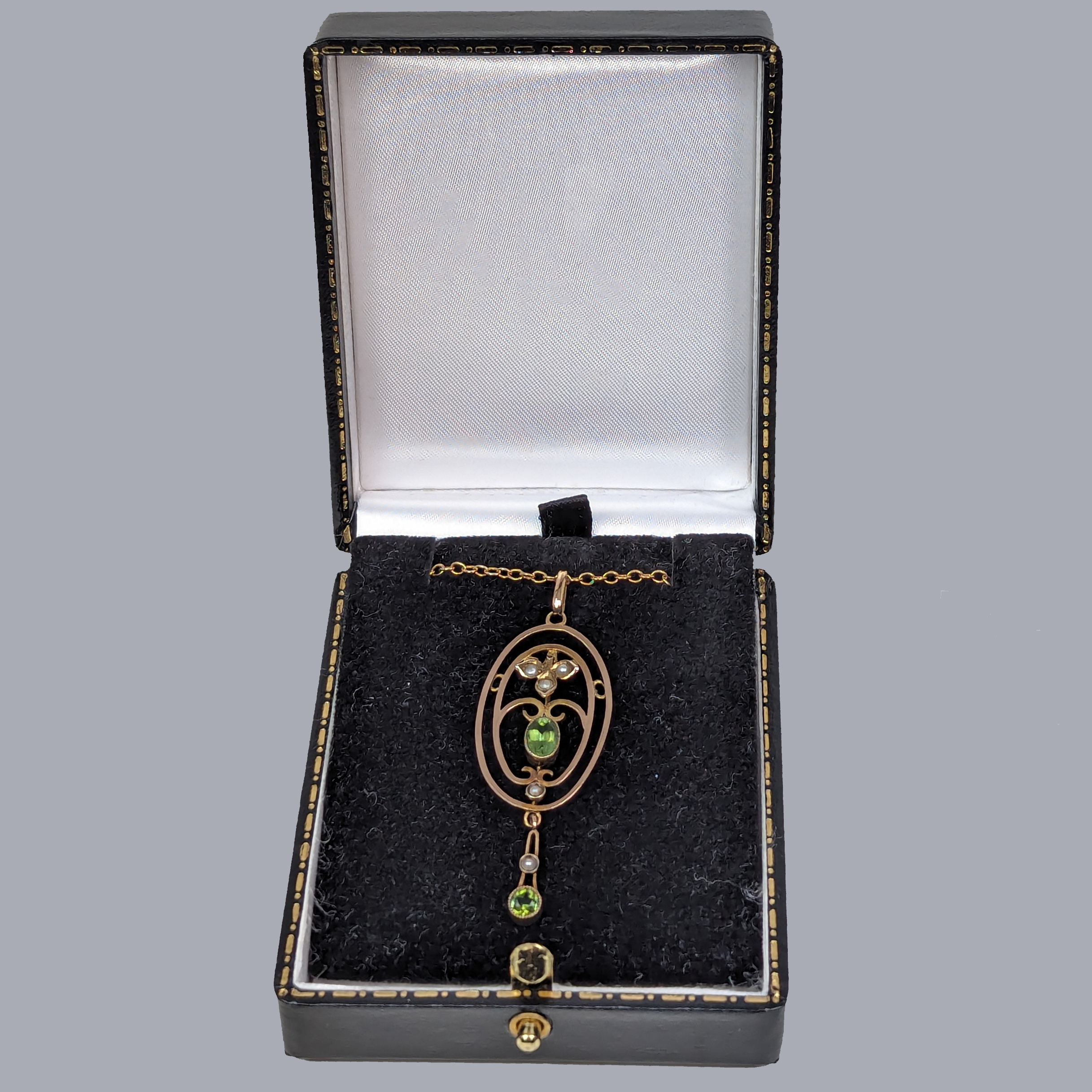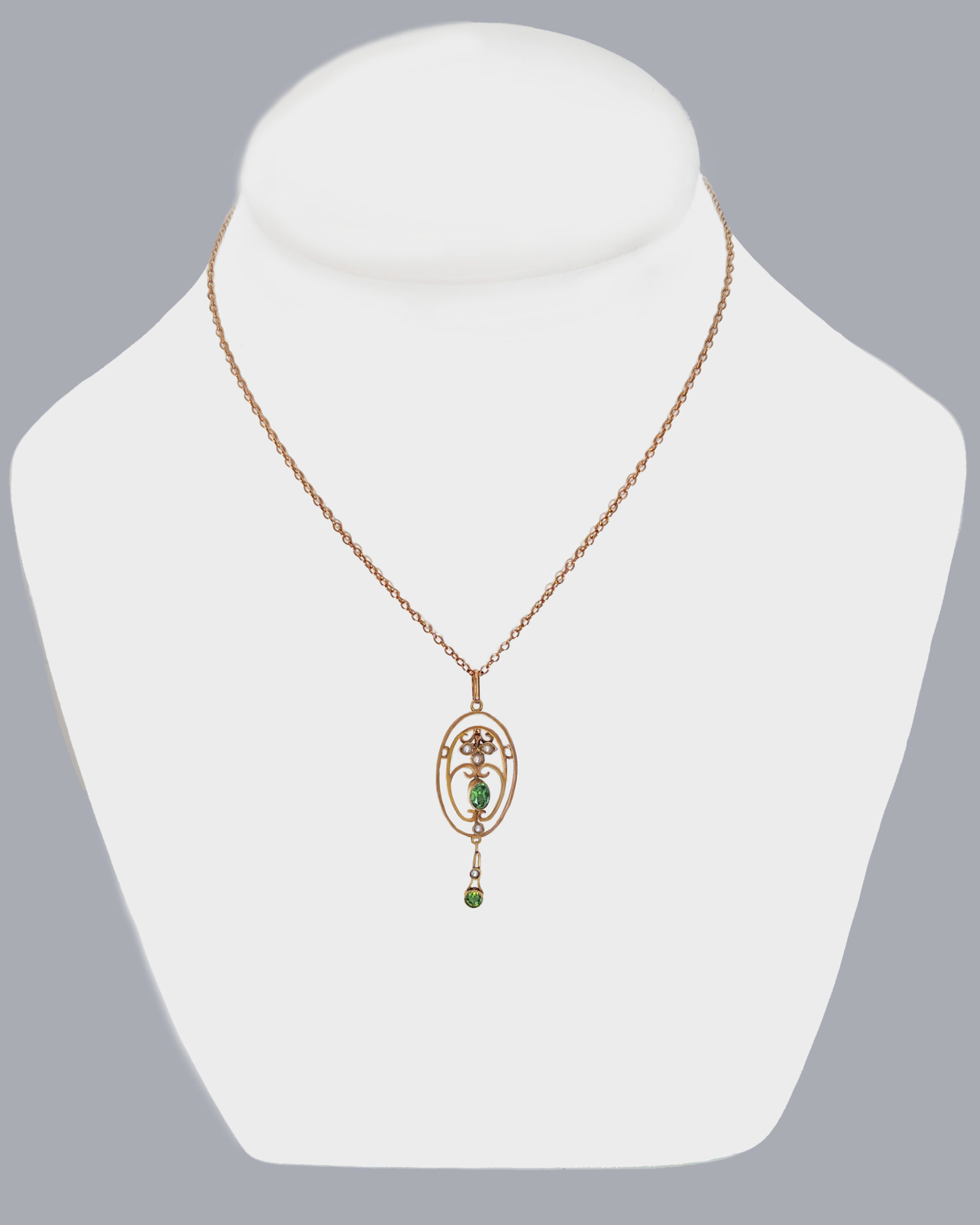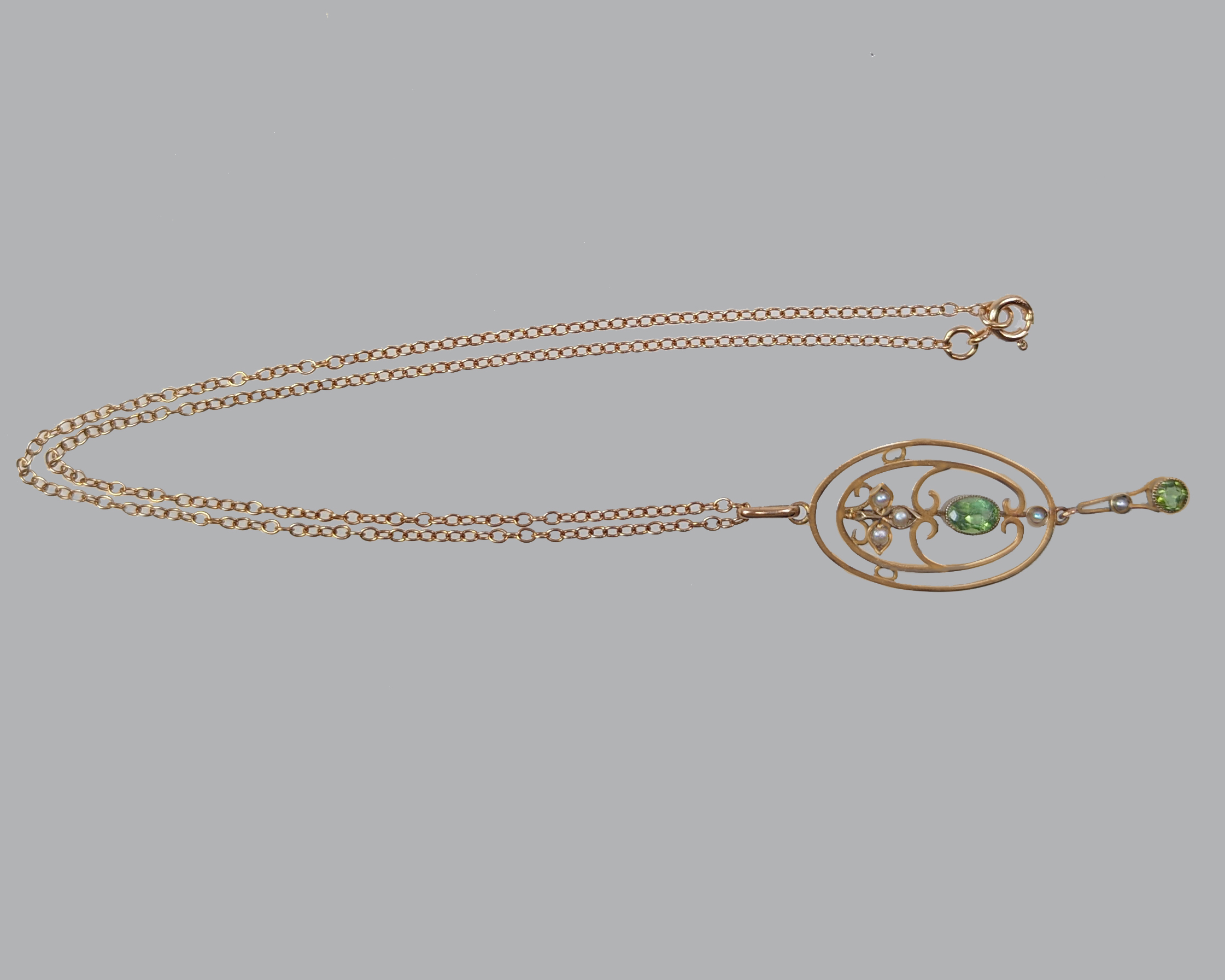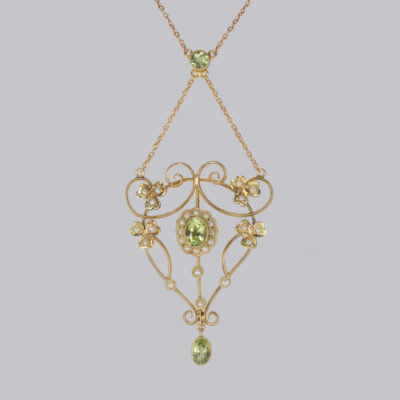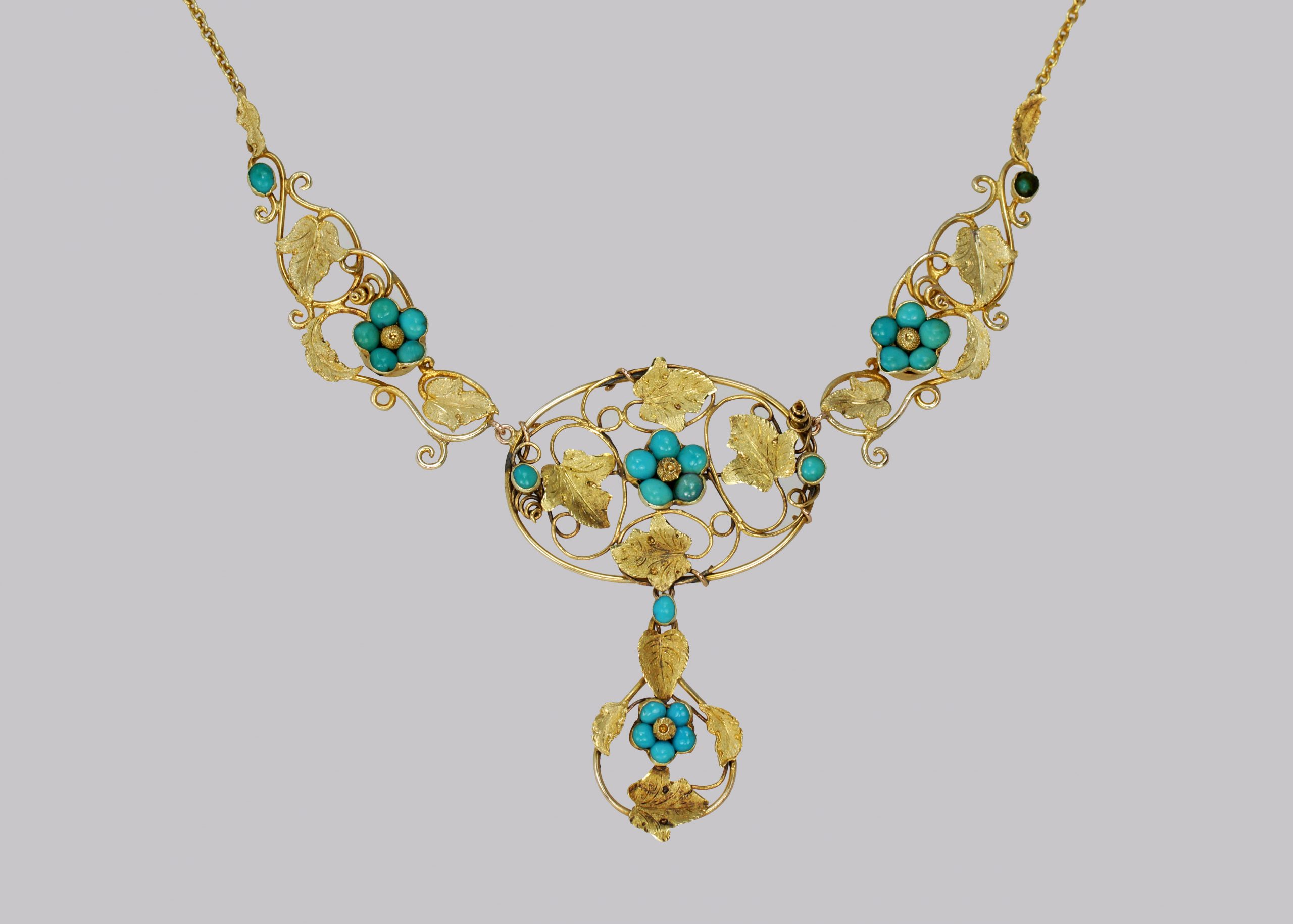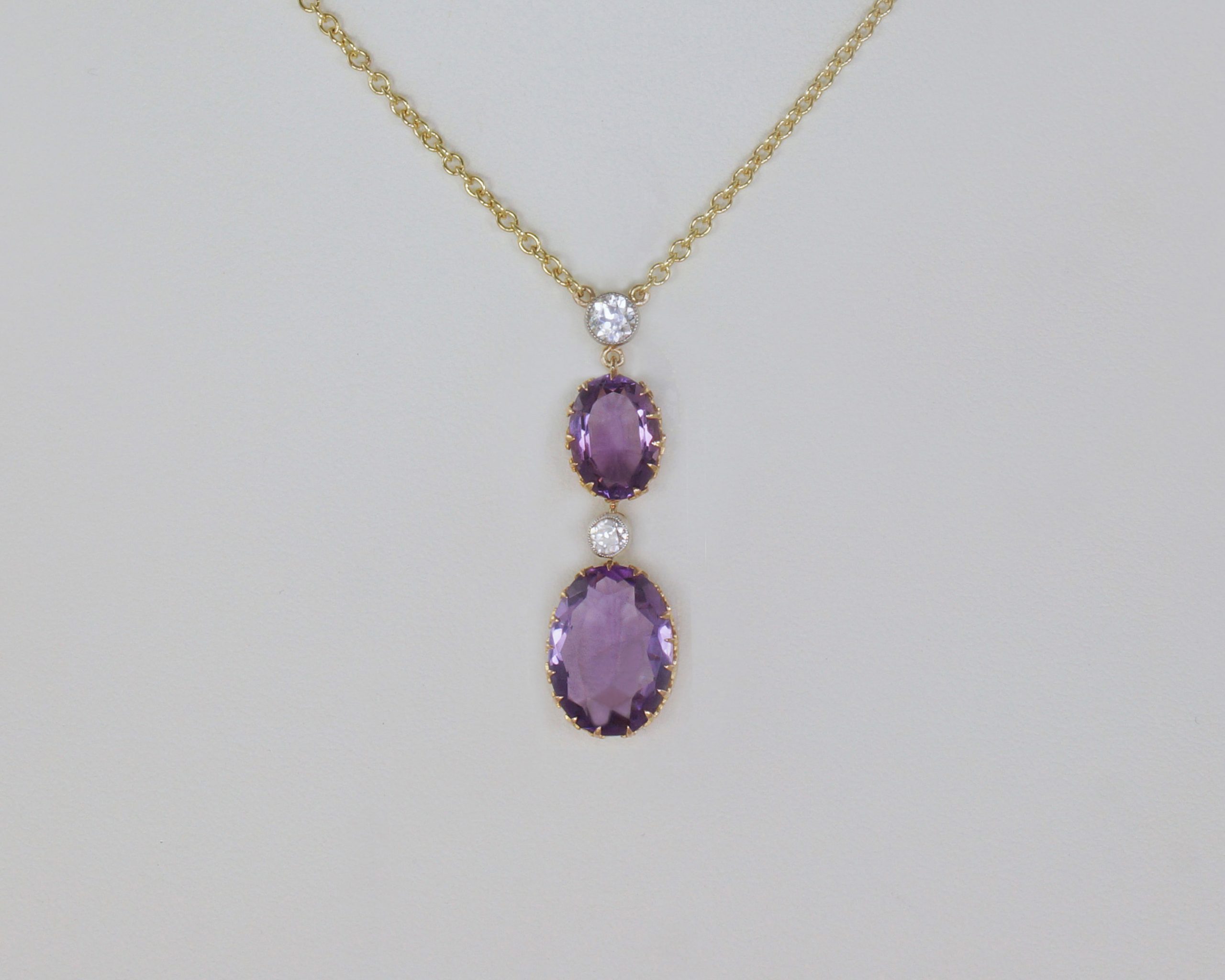Description
Edwardian peridot pearl pendant
The pendant is 5cm (2″) long including bale and 2cm (3/4″)wide
Central peridot 6.3mm x 4.6mm
Seed pearls 1.5mm
Reverse of pendant stamped 9ct twice and also on bale
With later matching chain 41cm (16″) long
Chain hallmarked 9ct gold Birmingham and marked Cc
Pendant dates to around 1910
Pendant and chain weights 4.5 grams
They are in excellent condition.
It comes in the presentation box illustrated.
Our Ref 2340 Our Vintage pendant collection
Peridot
In the past peridot was called olivine. It is often mis-identified as chrysolite, a yellow – green chrysoberyl. The finest peridot is a deep apple green colour and was first found on the Isle of St John in the Red Sea. Peridot has been used in jewellery at least since the Roman times. Most peridot available today is of Victorian extraction or later. In the 1700s peridot was used to decorate fob chain ornaments and objects of virtue. In the early and mid-Victorian times ladies wore complete parures, tiara, necklace, earrings, brooch, bracelets, and ring. At the end of the 19th century peridot found favour in 9ct and 15ct open work pendants, often in the presence of pearls.
Pearls, amber and coral are precious gems produced by plants and animals. These gems are adored because they are so attractive and rare and have thus been worn as jewellery for thousands of years. The most highly prized and the most expensive of this group are the fabulous and amazing pearls, they have one unique quality, which is, they can be worn by anyone, at any time, in any situation!
Factors affecting the price of pearls.
Pearl types, Lustre, thickness of nacre, colour, shape, size, surface quality, treatment status. The most expensive type of pearl is the natural pearl, these were the only type available until about 1900, when Mikimoto started to produce cultured pearls. Cultured pearls are from farmed oysters, whereas natural pearls come from “wild” oysters. Also, we have sea water pearls from the oceans and freshwater pearls from the rivers and streams. Seed pearls were very small pearls used extensively in Victorian jewellery. Artificial pearls are made from many materials often coloured glass.
Pearls are traditionally the birthstone for June.
Care of your vintage-antique pearls.
Pearls are delicate and can easily be damaged, pearl is just 2.5 on the Mohs hardness scale. They should be wrapped in silk cloth so that they do not dry out or become scratched by other hard objects or jewellery.
Pearls absorb oils from your skin and it keeps them looking bright and lustrous, otherwise, pearls will dry out.
Also, pearls are not resistant to sprays and perfumes.


